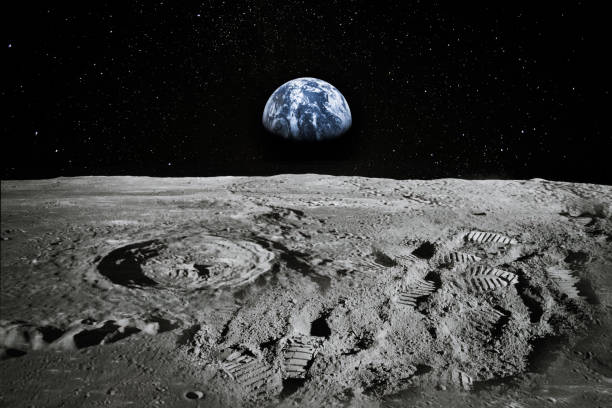The moon has fascinated humanity for centuries. Its changing phases, serene glow, and craters visible even from Earth make it a captivating subject for stargazers and photographers alike. But capturing real moon pictures is no easy feat; it involves skill, the right tools, and a lot of patience. Here, we’ll explore the art of lunar photography, its challenges, and how you can get started on your own moon photography adventures.
The Challenge of Capturing the Moon
Photographing the moon might sound straightforward, but even experienced photographers face unique hurdles. Here’s why:
Atmospheric Interference
The Earth’s atmosphere can distort your view of the moon. Layers of air, humidity, and heat rising from the ground can blur the details, causing the moon to appear softer and less defined.
Light Pollution
If you’re trying to capture the moon from a bustling city, streetlights, advertisements, and building lights can compete with the moon’s natural shine, reducing the clarity of your image.
Equipment Needs
Your smartphone might suffice for snapping everyday photos, but capturing detailed, accurate shots of the moon often requires specialized equipment. This includes a quality camera, a tripod to keep the shot steady, and a good telescope or telephoto lens to zoom in on fine details.
Different Types of “Real Moon Pictures”
When you think of photographing the moon, you might imagine a standard image of its surface, but there are many ways to capture its beauty. Here are a few popular types:
- Lunar Landscapes
These showcase the moon rising or setting behind natural or urban scenery. Pairing the moon with recognizable landmarks adds scale and drama.
- Eclipses
Capturing a lunar eclipse takes skill but delivers incredible rewards. During this event, the Earth’s shadow covers the moon, often giving it a stunning reddish glow known as the “Blood Moon.”
- Earth-Moon Shots
These combine images of Earth and the moon, often taken from spacecraft or satellites. They’re a reminder of both the beauty of our planet and the vastness of space.
Equipment and Techniques for Stunning Moon Photography
Mastering moon photography takes more than pointing a camera at the sky. Here are some of the tools and techniques you’ll need:
Essential Equipment
- Camera with Manual Controls: A DSLR or mirrorless camera is preferred for adjusting settings like shutter speed, ISO, and aperture.
- Telephoto Lens or Telescope: A lens with at least 300mm focal length is a great start, though higher focal lengths yield more detailed images.
- Sturdy Tripod: Keeps your camera stable, ensuring crisp photos even under long exposures.
Camera Settings
- A Lower ISO (like 100 or 200): Reduces noise in your image.
- A Narrow Aperture (such as f/11): Ensures sharp details across the moon’s surface.
- A Fast Shutter Speed (1/125 or faster): Helps to capture clarity without blur, as the moon moves quickly relative to Earth.
Post-Processing Tips
Even with perfect settings, moon photos often benefit from editing. Software like Photoshop or Lightroom lets you adjust brightness, contrast, and color to emphasize the moon’s details while keeping it natural-looking.
Showcasing Real Moon Pictures
To get inspired, here are some notable sources of real moon pictures:
NASA
NASA’s library contains some of the most detailed and iconic images of the moon, from Apollo-era photos to recent images taken by satellites like the Lunar Reconnaissance Orbiter.
Amateur Astrophotographers
Many amateur photographers produce jaw-dropping lunar photos using telescopes and high-powered lenses. Websites, forums, and social media like Instagram and Reddit are treasure troves of inspiration.
Astrophotography Competitions
Competitions such as the Insight Investment Astronomy Photographer of the Year often highlight breathtaking moon images from professionals and amateurs alike.
Debunking Misconceptions About Moon Photography
There’s been plenty of debate recently about what counts as “real” moon photography. For example, Samsung’s smartphone cameras have been criticized for adding AI-generated details to moon shots. This raised important questions about the authenticity of AI-enhanced photos and the line between photography and digital art.
True moon photography relies on capturing optical data through lenses, showcasing the natural beauty of what’s observable from Earth. If you’re unsure what qualifies as genuine, focus on images where the details result from capturing real light and shadows.
Tips for Aspiring Moon Photographers
Want to try lunar photography for yourself? Here are some tips to get started:
- Start Small
Begin with a smartphone or basic camera, practicing on a full moon first. You can always invest in more advanced gear as you improve.
- Know the Moon Phases
Each phase has a unique beauty. The best time for detailed surface photos is during the crescent or gibbous phases, as the shadows cast along the terminator (the line between light and dark) exaggerate the craters.
- Research Locations
Find spots with minimal light pollution for the clearest view. Apps like Light Pollution Map or websites like DarkSkyFinder can help.
- Use Smartphone Adapters
If your budget doesn’t allow for an expensive camera, try a telescope adapter for your phone. These fit over your phone’s camera lens, allowing you to utilize a telescope’s magnification.
- Experiment with Settings
Don’t be afraid to test out different shutter speeds, ISO levels, and apertures. These small tweaks can lead to big improvements.
- Join a Community
Look for astronomy clubs or online forums where you can share your shots, get tips, and learn from others’ experiences.
Celebrate the Night Sky
Capturing “real moon pictures” takes effort, but the reward of seeing our celestial neighbor in stunning detail is unmatched. Whether you’re a space enthusiast with a telescope or a beginner with a smartphone, the moon always offers a beautiful and photogenic challenge.
Ready to give it a go? Grab your camera gear on the next clear night and start shooting! And remember—as beautiful as the moon looks in photos, nothing beats taking a moment to admire it with your own eyes.








